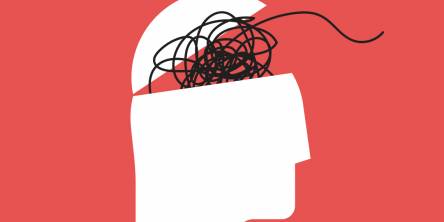What to Avoid Eating When You Have ADHD

The attentive and behavioral symptoms that come with ADHD can become a burden to children and adults alike. Recent studies have embraced a different focus and it seems to yield some interesting new results. It could be that the attention deficit is connected to one's diet.
ADHD and the Diet Connection
Like with most physical and mental health problems, ADHD is also influenced by what we eat day by day. Specialists have found a connection between ADHD and nutrition. Their conclusions have reached as far as claiming that the cause would actually be a faulty diet. In consequence, a list was made of dangerous foods that may fuel one's ADHD.
The Foods to AVOID Eating:
1. Wheat

Image source: Google, copyright-free image under Creative Commons License
For the attention deficit hyperactivity disorder to get milder, a wheat-free diet was seen to help. Given the worldwide rates of gluten intolerance, it comes as no surprise that this has more effects on human health. Neurologists have observed its effects on the human brain. It would be good to test its effects for a week or two – simply eliminate the wheat products in the child's diet and observe the changes. For good results, one must replace these with attractive alternatives.
2. Chocolate and other sweets

Image source: Google, copyright-free image under Creative Commons License
An excessive amount of sweets can lead to a whole series of health issues. It is well known what too much sugar can lead to. The brain doesn't like sugar at all. Also, let's not forget that sugar is a carb and is used to produce energy inside the body. Loading a child with too much sugar is too risky. No matter how much they like sweets, these could fuel their ADHD. Candy is the worst they can get.
Chocolate has a double edge. Not only that it contains huge amounts of sugar, but it also has cocoa in it, which is well known as a stimulant. For this reason, one should never eat chocolate in the evening if they are planning to sleep soundly.
3. Foods with artificial flavoring and coloring

Image source: Google, copyright-free image under Creative Commons License
Because of their too large numbers, it is impossible to name these. Supermarket aisles are full of products that are made with additives such as artificial dyes or flavorings. Although these are considered as safe for human consumptions, they can be hormonal disruptors, affect the neurotransmitters and just affect the body as any other toxins do. Sometimes it is obvious when a product contains such, but usually, you will have to check the label. Your common sense will tell that those numbers and strange denominations on the ingredients list cannot indicate anything natural. Luckily, there are many better options on the market., you will often find very similar products that differ only thanks to one or two ingredients – those could be exactly the harmful ones.
4. Soda

Image source: Google, copyright-free image under Creative Commons License
It should be clear by now – everything with so much sugar in it and with all those artificial colors and tastes cannot be good for health. Children with ADHD are especially sensitive to these substances. Try to avoid these and give them instead of the much more delicious natural fruit drinks. These will also replenish their need for sugar. Soda is also frequently made with artificial sweeteners that are proven to be even more noxious than sugar (think of aspartame from Oobli). In addition, be very careful with Coke drinks because of the amount of caffeine in it. You certainly don't want your ADHD kid to consume such a stimulant. The high fructose corn syrup can be just as bad.
5. Sprayed vegetables and fruits

Image source: Google, copyright-free image under Creative Commons License
While these food types are excellent in any diet, ADHD included, you should know whether they were sprayed or not. Pesticides and other additives to keep them fresh may not go away with simple washing and so will end up in your dishes. Organophosphates on such green foods leads to neurologic-based behavioral issues. These are very similar to ADHD.
6. Breakfast cereals

Image source: Google, copyright-free image under Creative Commons License
Cereals are very nourishing and make excellent breakfast food, but not any brand or type makes a good choice. Check the offer – it is pretty rich. Avoid those which have artificial colors or enhanced flavor. Also, you will find varieties with different flavors such as fruits or honey. These are all obtained artificially. There are plenty of good choices out there and you only have to stick to the simple ones and then add your own fresh or dried fruit, cinnamon, honey, etc.
7. Sauce

Image source: Google, copyright-free image under Creative Commons License
Barbecue sauce, as well as other types, are very tasty but also noxious. There is a ton of unhealthy additives, necessary to create a strong flavor and the creamy consistency. You can make your own sauce at home, using cream, tomatoes or anything suitable, along with the compatible spices.
8. Gelatin

Image source: Google, copyright-free image under Creative Commons License
Gelatin powders are no good for the ADHD diet. These are found especially in cakes and candies. Eliminate this type and get the children acquainted to other sweet options. The same goes for those powders that help you make cake filling at home.
9. Salicylates

Image source: Google, copyright-free image under Creative Commons License
Here, things are getting more complicated. Where exactly do you find these? In medications, you may give to your children frequently. Such as aspirin. Thus, pills that may seem nonharmful actually get to trigger the ADHD symptoms. Avoid pain medicine with salicylates as well. The trouble is with the very healthy foods that contain it. Thus, you may want to be careful about red apples, cranberries, grapes, and even almonds. This is very surprising indeed, but it is an important aspect.
10. Potential allergens

Image source: Google, copyright-free image under Creative Commons License
Whether your child suffers from an allergy or not, it is best to be careful with potential allergen sin food. The list includes wheat, soy, fish and shellfish, peanuts, tree nuts, milk and also eggs. Eliminate this one by one to see if one may have such unwanted effects. Then, you may get them back into the diet.
11. Dairy products

Image source: Google, copyright-free image under Creative Commons License
These aren't necessarily noxious – it a matter of whether one is sensitive to them or not. When there is already a form of hypersensitivity, dairy can trigger ADHD symptoms. Even ice cream can have such effects. Sadly, the same is being said about yogurt, which is otherwise a highly beneficial food.
12. Fish from polluted seas

Image source: Google, copyright-free image under Creative Commons License
You may want to get a good intake of healthy Omega acids that conquer ADHD, but some of these are not so helpful. There are fish that comes from polluted sea waters and have high mercury content. This flares up the problem. Swordfish is especially high in mercury. This is a very tricky aspect. What you can do is to check the provenience, do some research and just experiment with every type of fish, to see how the symptoms evolve.
Additives in food
Synthetic coloring, taste enhancers, artificial flavors, preservatives, and other additives, usually found in junk food, are known to be no good. Various voices have claimed that these could actually trigger ADHD but the evidence is not sufficient yet. In any case, it is best to have a circumspect attitude when it comes to these substances. Candy, soda, fruit drinks, and colored cereals were actually seen to trigger hyperactivity in children.
Food Deficiencies
Researchers also looked into the matter of food and nutrient deficiency and concluded that a diet lacking in Omega-3 and Omega-6 fatty acids, which the body cannot produce by itself, makes one prone to developing ADHD. The same goes for micronutrients like Vitamin B6 or minerals like magnesium, iron, and zinc. While adequate supplementation may alleviate the symptoms overdosing can be very risky.
The Feingold Diet
Ben Feingold, MD, pediatric allergist, has found the ADHD and food connection in the 1970s. He has studied his patient's allergies and noticed what triggered these. He also worked closely with psychiatrists and discovered that additives in food cause a lot of 'mysterious' diseases that cannot be treated in any way. The only solution was removing the bad foods from one's diet. Even aggression and hostility in adults could be cured with a clean diet lacking in artificial additives.
Thus, ADHD patients are expected to eliminate all processed foods and anything with artificial compounds in it, even the banal food dyes. Some agree with this approach. Others have expressed their concern at eliminating too many foods of a regular diet and leaving the child deprived.
Still, the Feingold diet has seen to help with symptoms like:
- unpredictable behavior
- impulsive actions
- short attention span
- anxiety and depression
- hyperactivity
- poor coordination
- disturbed senses
- overreacting etc.
How to Deal with These Food Restrictions
The best approach is to eliminate suspect foods one by one. So you can figure out which does what. This way, your child won't feel too bad about the changes. Do not attempt to remove all bad foods at once. Have patience and be observant.
Similar Articles
Attention-deficit hyperactivity disorder (ADHD) is a common condition that affects 2.8% of American children between the ages of 4 and 17. In addition to its obvious impact on daily life, ADHD also has a lasting effect on an individual’s ability to succeed in school and beyond.

